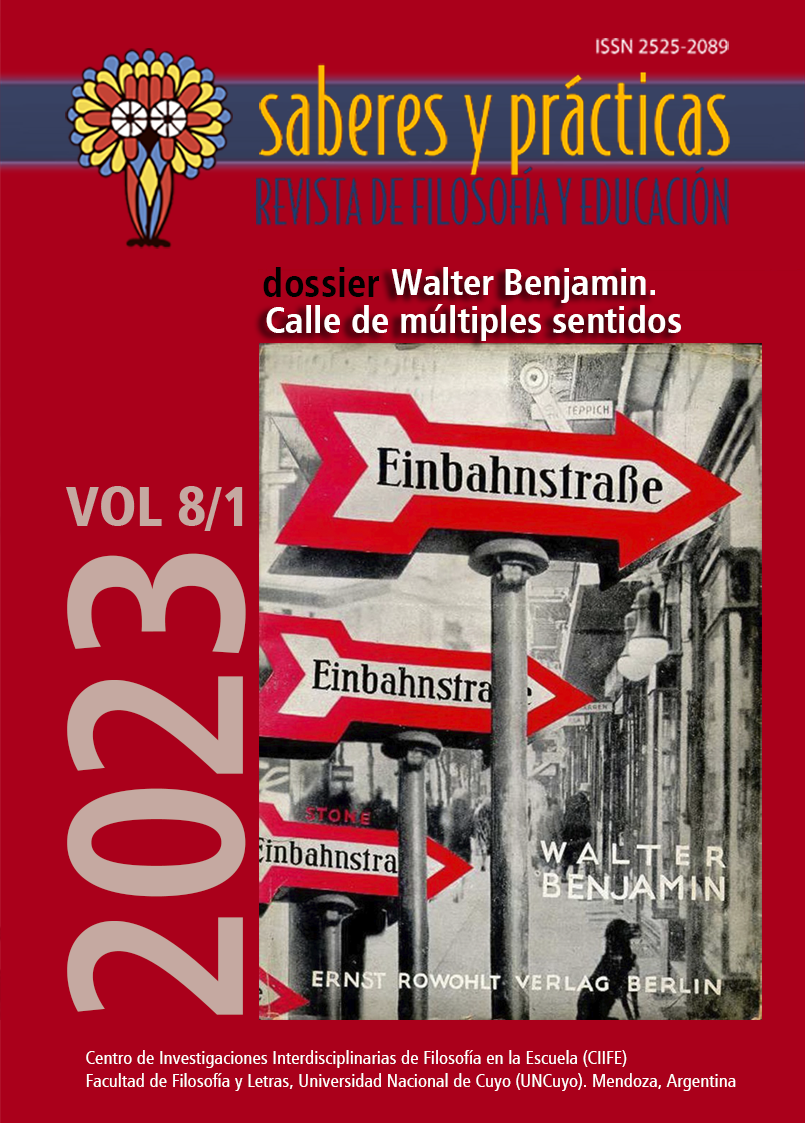Figures of disfigurement
The little hunchback and his family circle
DOI:
https://doi.org/10.48162/rev.36.097Keywords:
Disfigurement, Walter Benjamin, Franz Kafka, messianism, reconciliationAbstract
"Disfigurement is the form that things take in oblivion," Walter Benjamin states in his famous essay on Franz Kafka. The world of disfigurement harbors all that, excluded from the social and linguistic order and forgotten by us, has been discarded as useless, leftover, unclassifiable. Yet, this rest survives the purposeful, goal-oriented order. This residue, precisely because it cannot be conceptualized, has always produced its own world of images in literature, music, in short, in human imagination. In this article, I rescue Walter Benjamin's idea of disfigurement as an interpretative key to this circle of figures. The inhabitants of this world of disfigurement mischievously hide in the corners of our domestic order. They are strange and alien, unsettling as something that was once ours and is now excluded. What they have in common is that they refuse to speak, that they escape the grasp of the concept, that they cannot be immobilized, that they provoce guilt and shame, and that - perhaps because they do not live but at most survive - they cannot die. As unruly, ghostly shape-shifters, they give us no respite, demand our attention and challenge our thinking, and suggest that without them a reconciled life will not be possible.
Downloads
References
Adorno, T. W. (1964). Minima Moralia – Reflexionen aus dem beschädigten Leben. Suhrkamp.
Aichinger, I (2021 [1976]): Hemlin, in: Schlechte Wörter. Fischer, Frankfurt am Main.
Benjamin, W. (1998): Franz Kafka, en: Iluminaciones IV. Para una crítica de la violencia y otros ensayos. Editado por Eduardo Subirats; traducido por Roberto Blatt. Taurus,133-161.
Benjamin, W. (1982). Infancia en Berlín hacia 1900; traducción Klaus Wagner. Alfaguara.
Benjamin, W. (1985): Phantasie, in: Benjamin, Walter: Gesammelte Schriften, Band VI, Fragmente versmischten Inhalts, Autobiographische Schriften. Suhrkamp.
Buci-Glucksmann, C. (1984). Walter Benjamin und die Utopie des Weiblichen. VSA Verlag.
DWDS (Digitales Wörterbuch der deutschen Sprache) (2023). ent-“, <https://www.dwds.de/wb/ent- >, último acceso 14. 4. 2023
Freud, S. (1989 [1919]). Das Unheimliche, in: Freud, Sigmund: Studienausgabe. Bd. 4, Fischer.
Graf, S. (2022). Como el papel secante con la tinta – La teología inversa de Walter Benjamín Theodor W. Adorno. Editorial Gedisa.
Liska, V. (2002). Odradeks Schwestern, in Ecker, G.; Breger, C.; Scholz, S. (ed.). Dinge. Medien der Aneignung, Grenzen der Verfügung. Königsberg, Ts.
Perrier, F. (2009). Vorwort, in: Palmier, Jean-Michel: Walter Benjamin – Lumpensammler, Engel und bucklicht Männlein. Ästhetik und Politik bei Walter Benjamin. Suhrkamp, Frankfurt am Main.
Kafka, F. (2003): Las Preocupaciones de un padre de familia. En: Kafka, Franz: Cuentos completos, traducido por José Rafael Hernández Arías; Valdemar.
Khatib, S. (2013). 'Teleologie ohne Endzweck'. Walter Benjamins Ent-stellung des Messianischen. Tectum Verlag.
Schafroth, Heinz F. (1981). “Hinter Pritzwalk und Privas”. Die Topographie des Privaten im Werk Ilse Aichingers, in: Über Ilse Aichinger, Schweizer Monatshefte 61 (1981).
Spengler-Axiopoulos, B.; Wesener, S. Steht ein bucklicht’ Männlein da“- von Oskar, Zwerg Nase, dem Däumling und anderen kleinen Gestalten. Der Zwerg in der Literatur; contribucion de radio. https://assets.deutschlandfunk.de/FILE_ed3bb2028200dad5d3fbbe9f076c7eb8/original.pdf (último acceso 20 de abril 2023)
Published
How to Cite
Issue
Section
License
Copyright (c) 2023 Stephanie Graf
This work is licensed under a Creative Commons Attribution-NonCommercial-ShareAlike 2.5 Argentina License.





















